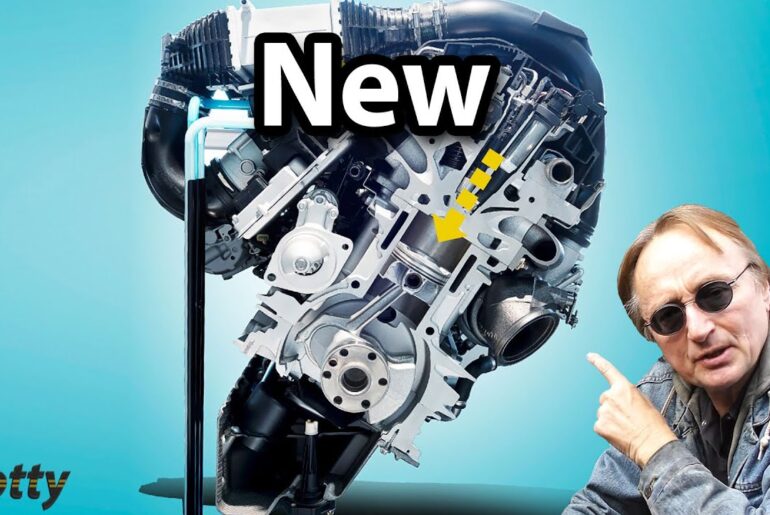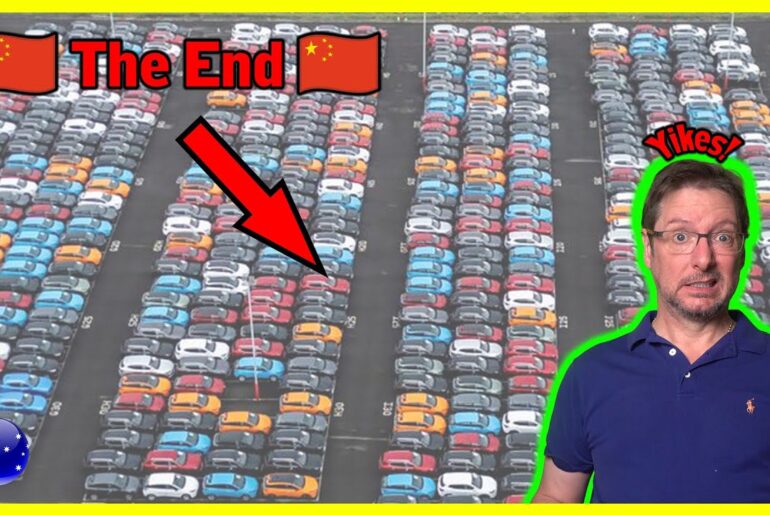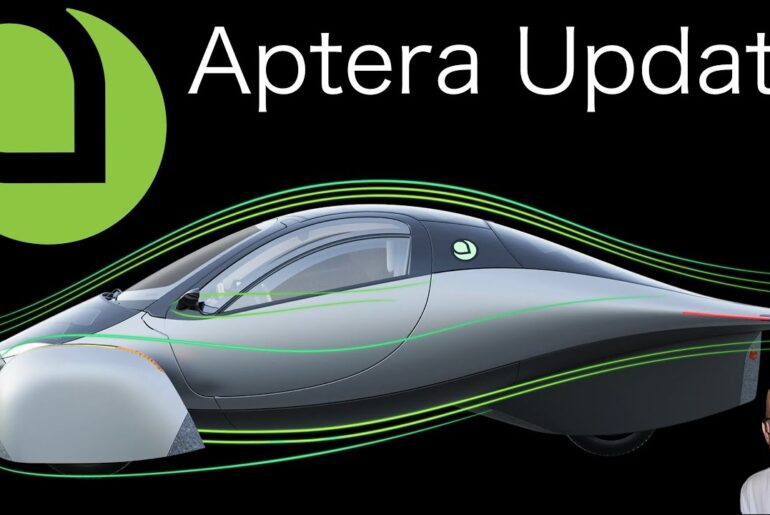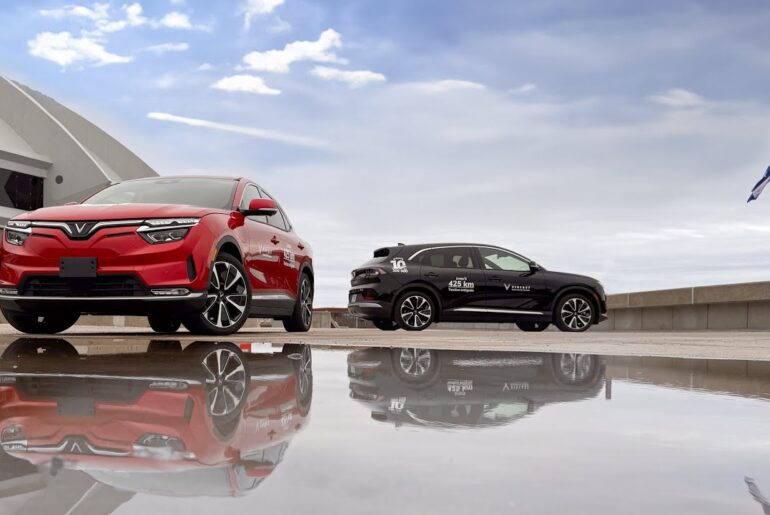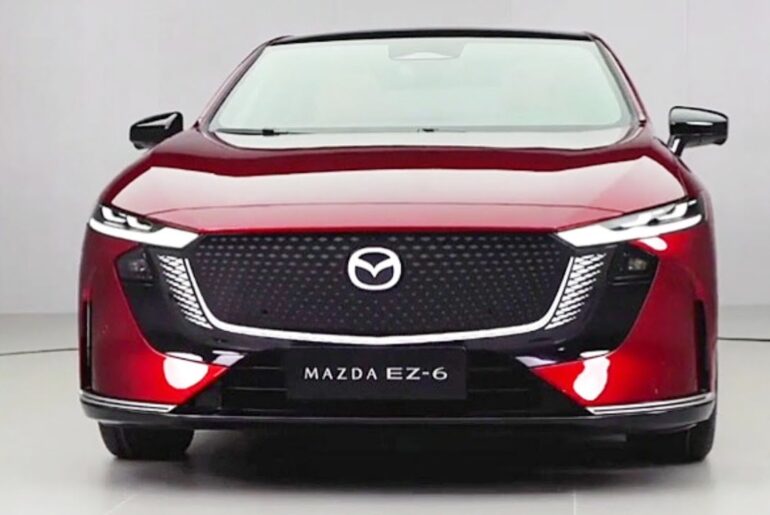How Chinese EV Giant BYD Is Taking On Tesla
In the world of electric vehicles, Tesla has reigned supreme. But its days as top dog may be numbered. In China, the world’s largest EV market, it’s been losing ground to domestic automakers as a ruthless price war has inflamed an already competitive market.
If Tesla had not had price cuts of 20 to 30%, they probably would have actually had sales drop last year. And there’s one carmaker in particular that has given Tesla a run for its money – Warren Buffett backed BYD. The Chinese automaker logged 2.4 million new car insurance registrations in 2023,
Making it the top brand in China with a market share of 11%. I don’t think anywhere in the history of the automobile has any company enjoyed such explosive growth in such a short period of time? BYD has grown into this powerhouse. You look at the monthly rankings, they’re always at the top.
In 2023, BYD produced more than 3 million new energy vehicles, which include plug in hybrids and battery electrics, surpassing Tesla’s production of 1.84 million cars. BYD is so much ahead of Tesla in China. It’s almost ridiculous. Early on, Elon Musk was dismissive of BYD. Chinese carmakers weren’t taken seriously by their rivals.
It used to be that foreign brands had the majority of the market share in China. Now it’s Chinese brands. And when you look at the vehicles that these Chinese OEMs and Chinese brands are putting on the market, they are some very good vehicles. Now, they’re a serious threat as they not only
Dominate the Chinese market, but have grand ambitions of expanding globally. In 2023, BYD’s exports grew 334% to 242,765 vehicles across 70 countries. About 40% of the EV market in China is owned by BYD, and they’re just starting to export globally to places like Australia, Japan, Europe and potentially very soon, the United States.
CLSA has some predictions that by 2026 BYD will enter the top five automakers in the world, and this year they may reach the top ten. BYD, short for Build Your Dreams, was originally started as a battery company in 1995 by Wang Chuanfu in Shenzhen, China.
It started out in the 1990s as a manufacturer of batteries for cell phones, and for the first ten years, low cost was their magic formula. We’re going to undercut all the competition. After building a successful business supplying customers such as Motorola and Nokia, it decided to enter the auto business.
It bought Xi’an Tsinchuan Automobile and launched its first internal combustion car in 2005, the F3. In 2008, it launched the F3DM, a plug in hybrid EV. I remember driving in and riding the earliest BYD’s. They were called the F3 and the F1, inspired by Formula One racing, which is almost comical because
Their cars were these sort of mediocre commuter cars that were powered by Mitsubishi engines. In 2010, it unveiled its first fully electric vehicle, the e6. It was progress, but it wasn’t perfection still. Taxis would buy the electric vehicle because they got incentives to do so. But very few private individuals had any
Appetite for BYD cars. The company’s auto division didn’t see much growth through the 2010s. Sales increased, but only gradually. Profits on those sales were mediocre. In fact, in 2018 and 2019, BYD’s sales year on year were declining. Up until very recently, it was on the fence
Whether or not it was going to make it as a car company. However, it managed to turn things around. In 2019, I saw some of their new products called the Tang and the Han, designed by German designers, world class designers. And the first time you see, oh, these are actually good looking cars.
There’s potential here. In 2022, the company stopped production of its ICE vehicles, focusing on building battery electric and plug in hybrids. The majority of their cars are in the mass market, so that helps with volume, and they’ve also not completely shifted into pure electric vehicle at once.
BYD is backed by Warren Buffett’s Berkshire Hathaway and considered entering the U.S. Market in 2008, when Buffett acquired 10% of the company. Warren Buffett himself said, I’m betting on the man. I don’t understand the technology. I’m not sure about the China market. Will EVs take off or not?
But this guy is one in 10 million. So he recognized something special in Wang Chuanfu and it’s with that that he gave his blessing to an investment, about a quarter billion dollars. A lot of the reason why he invested was because of the battery business, more so than the vehicle
Business. And that has grown dramatically along with their vehicle sales. BYD’s stock is up over 1,400% since Buffett first invested. Berkshire Hathaway did pare down its stake in the company, selling more than 60% of its shares since last summer. Why would he draw down? So one is geopolitics, as he’s mentioned with
Taiwan, he said, I don’t like TSMC because of the location. Second thing going on, Tesla ignited a price war about one year ago at the end of 2022, and that price war has been ferocious. So much so that most EV makers in China are losing
Money today. There’s only Tesla, BYD, and a couple others that are actually able to make a profit. At the core of BYD’s winning strategy – price. Many of its vehicles undercut the competition. In Munich just a few months ago, they launched The Seagull, priced at, get this, $11,500.
Very competitive in the segment of $35,000 and under. Its expertise in batteries, typically the most expensive part of an EV, has helped here as well. BYD designs, develops, engineers its own batteries at scale. So not only they have the capability and the capacity for their own products, but they’re also
Supplying batteries globally with plans to build battery plants all over the world. They are one of the top companies in the world building lithium iron phosphate batteries in particular. They cost about 30 to 40% less per kilowatt hour to manufacture, and LFP batteries are also extremely durable. They last a long time.
As a leader in battery technology, it actually supplies batteries to other car makers like Tesla, Toyota and Kia. In 2020, it launched the Blade, a lithium iron phosphate battery that the company touted as a breakthrough in high energy density with high levels of safety. By many accounts, bYD’s Blade battery is best in
Class globally right now. What they’ve done essentially is to maximize the energy density, and this is attractive to everyone in the industry. BYD is not just in the passenger car market, it makes trucks, busses and other vehicles as well. The company actually builds and sells electric busses in the U.S.
At a factory in Lancaster, California. They have had a big business in the commercial fleet vehicles including busses in the U.S., Latin America. But its passenger cars are what account for the majority of its sales. The company offers several models at a variety of price points.
The Dynasty series includes the Qin, with a price starting around $14,000 to vehicles priced all the way up to the Tang, on the high end, starting around $34,000. The vehicles that really put BYD on the map for the new energy segment is the Han.
It’s a sedan that they launched in July 2020 and this car just took off. The Ocean series appeals to younger consumers and features the Seagull, BYD’s smallest car, with a starting price around $10,000, up to the Seal, a sedan that starts around $22,000. When they released the Dolphin and Seal models,
One of the things that I was told was, well, we have many different colors. It’s supposed to appeal more to young families and especially women. BYD has also introduced vehicles under luxury subbrands Denza, Yangwang and Fang Cheng Bao. Denza, a joint venture with Mercedes-Benz created
In 2010, introduced a few EVs for the Chinese market before undergoing a restructuring in 2021. Mercedes has since reduced its share to 10%, but BYD has continued to develop new vehicles, starting with the D9, a luxury minivan. The N7, a direct competitor to the Tesla model Y, and the N8, a larger SUV.
Yangwang, created in 2023, targets the high end segment with a supercar, the U9, and a luxury SUV, the U8. Details of its next car, the U7, recently revealed it will have quad electric motors with a range around 500 miles. Fang Cheng Bao, also created in 2023, launched
Its first vehicle, the Bao 5, in November last year. Yangwang is definitely BYD’s effort to enter that really luxury segment of the market. The cars are either extremely gigantic or they’re in the sports car category, which is very different from BYD’s other cars. Most automakers, at some point in their history,
Try to create halo vehicles that will reflect well on the rest of the brand and and create an image for the brand. And BYD is no different. It’s a sign of their growing confidence and say, look, we can do what Ferrari or Lamborghini or Porsche can do. Just as well, if not better.
Being the leading electric carmaker in China, BYD has set its sights on bringing its cars to other markets. Starting around 2018, 2019, markets slowed and margins started to drop, and all Chinese automakers said, uh oh, if we stay still in our domestic market, we’re going to drown in overcapacity and hyper competition.
And we’re already seeing that play out. It’s already a major player in Southeast Asia, where it has 43% market share in EVs and is currently the top selling EV maker in Thailand, Brazil, Colombia and Israel. In Thailand, they were basically non-existent in the market a year ago, and just in the last few
Months, they’ve become the top selling car brand, and I believe they also have targets to double their sales in the Philippines and Singapore this year. Last year, the company started selling in Mexico and is looking to enter Japan. They just are launching the Dolphin in Mexico now,
Increasingly growing into other markets in South America, where Tesla doesn’t really have as much of a presence right now. BYD is building up its presence in Europe. Last year, it sold 13,000 vehicles there and now has its own massive cargo ship capable of carrying 7,000 vehicles.
It recently delivered 3,000 cars to Germany in its first voyage. It’s pretty in line with BYD’s strategy overall to make sure they have as much as possible in-house. With the ship, that just gives BYD extreme control over costs. It’s safe to say that their number one priority
Right now overseas is Europe, because in Europe there’s legislation to go electric, there’s people with money to buy electric cars, there’s decent charging infrastructure. The company has said it will open its first European plant in Hungary, but the Chinese automaker is facing obstacles abroad.
The EU in the last couple of months has announced they’re going to be investigating subsidies that went into the production of Chinese made electric vehicles. The EU Commission saying, hey, we don’t believe your costs. We think that you’re probably dumping or over subsidizing your products, and that’s why you’re so competitive here.
In China, new energy vehicles have received substantial support from the government. Rhodium Group estimates that BYD received approximately $4.3 billion in state support between 2015 and 2020. But the biggest question of all, will BYD try to sell its cars in the U.S.? They’re definitely preparing for the U.S.
Market, waiting for the right timing. U.S. And Europe promise a profitable market. They have to enter and compete and win here to thrive globally. Currently, tariffs make it expensive with made in China EVs hit with a 25% tax on top of the 2.5% tariff imposed on imported cars.
A lot of these companies and the investors in these companies, which in some cases includes various levels of government in China, there seems to be more of a tolerance for, at least for the time being, taking losses in order to grow market share. It recently announced it will build a factory in
Mexico, possibly to gain a foothold in the North American market. Few people know it, but China is the number one supplier of cars to Mexico already, and the next natural step will be for them to build manufacturing plants in Mexico. They’re already looking at sites, they’re well
Advanced in their research, and will ship our vehicles up through the border into the U.S., starting probably, their expectations, after 2025. What is the possibility of the Chinese getting closer and closer to our market? Within the next 5 or 6 years you will see several automakers likely begin final assembly in Mexico.
Why is that important? Because of NAFTA, it basically eliminates that tariff. People will say, Americans won’t buy Chinese. You know, what you ask somebody, do you want to pay $9,000 for a an SUV, or do you want to pay $19,000 or $20,000 for an SUV? No contest. And that’s what we found with
Everybody we’ve talked to down here. U.S. Lawmakers have warned Chinese automakers could flood the market and be a threat to domestic automakers. People in D.C. definitely have an eye on that, and you can bet that they’re talking to the Mexican authorities. The risk is real for the U.S.
At a time when UAW has just negotiated all time record high wages and perks. In Australia, Chinese automakers aren’t restricted by tariffs, and BYD has grown considerably there. After entering the country in 2022, it now has 14% of the EV market. Tesla leads with a 53% share, but has been
Selling there since 2014. The Chinese car companies are the most competitive car companies in the world. I think they will have significant success outside of China, depending on what kind of tariffs or trade barriers are established. Frankly, I think if there are not trade barriers established, they will pretty much demolish most
Other car companies in the world. They’re extremely good. But with China becoming such an automotive powerhouse, it may be hard to keep its ambitions at bay. Chinese automakers have learned very quickly how to produce really appealing vehicles. They’re more affordable, and they’re arguably in many respects, better vehicles. The rest of the
Industry has reason to be scared. China, today, has capacity to deliver half of the world’s demand for vehicles. Half. And given their strength, and their low cost, and their increased designs and improved quality, you start to wonder, what is going to stop this juggernaut?
Warren Buffet-backed BYD dethroned Tesla in the fourth quarter of 2023 as the world’s top EV maker, selling more battery-powered vehicles than its U.S. rival. BYD was founded by Wang Chuanfu and started making batteries for mobile phones in the 1990s. By 2003, it pivoted to autos and now has become the top car brand in China, as well as a major producer of batteries for electric vehicles. It’s now aggressively expanding globally, exporting over 240,000 cars across 70 countries last year. Elon Musk said in Tesla’s Q4 earnings call that Chinese automakers will “demolish most other car companies in the world” unless regulators step in. With sights set on North America, BYD could try entering the U.S., but faces government opposition. CNBC explores whether BYD can sustain its relentless growth and what’s next for this EV juggernaut.
Chapters:
00:00 – 02:29 Title card – The rise of BYD
02:30 Chapter 1 – Early days
07:39 Chapter 2 – Vehicles
10:41 Chapter 3 – Expansion outside China
Produced and Edited by: Andrew Evers
Supervising Producer: Jeniece Pettitt
Animation: Christina Locopo
Narration: Robert Ferris
Additional Footage: Tesla, BYD, Getty Images
» Subscribe to CNBC: https://cnb.cx/SubscribeCNBC
» Subscribe to CNBC TV: https://cnb.cx/SubscribeCNBCtelevision
About CNBC: From ‘Wall Street’ to ‘Main Street’ to award winning original documentaries and Reality TV series, CNBC has you covered. Experience special sneak peeks of your favorite shows, exclusive video and more.
Connect with CNBC News Online
Get the latest news: https://www.cnbc.com/
Follow CNBC on LinkedIn: https://cnb.cx/LinkedInCNBC
Follow CNBC News on Facebook: https://cnb.cx/LikeCNBC
Follow CNBC News on Twitter: https://cnb.cx/FollowCNBC
Follow CNBC News on Instagram: https://cnb.cx/InstagramCNBC
#CNBC
How Chinese EV Giant BYD Is Taking On Tesla

